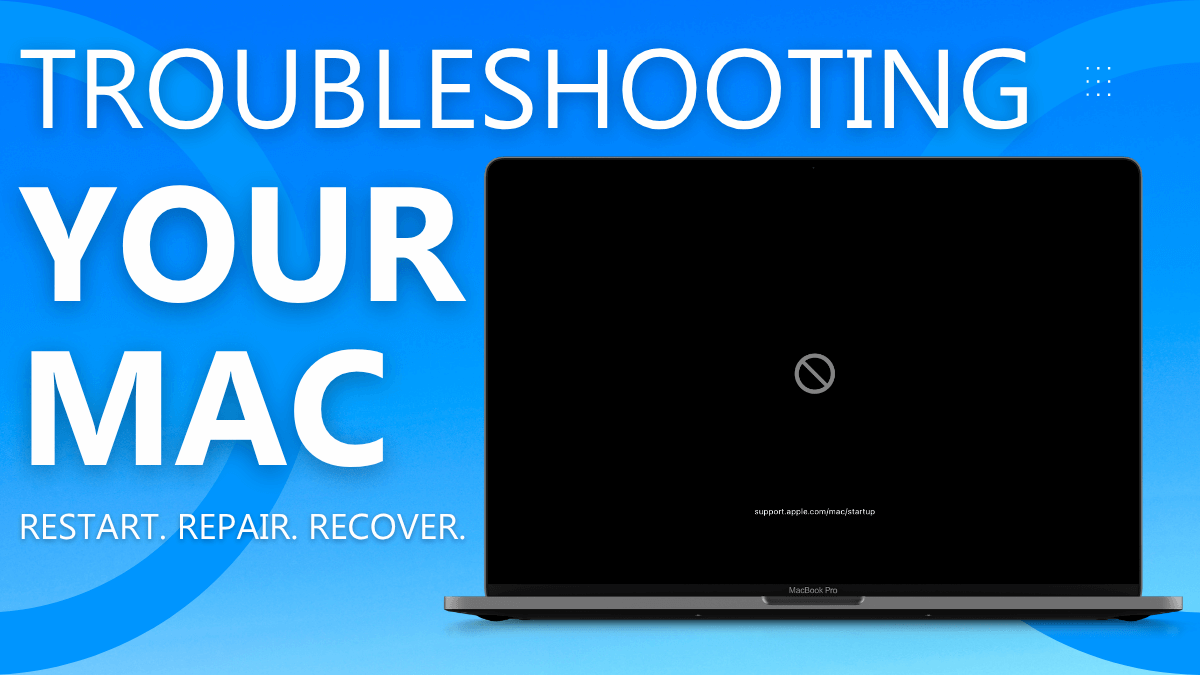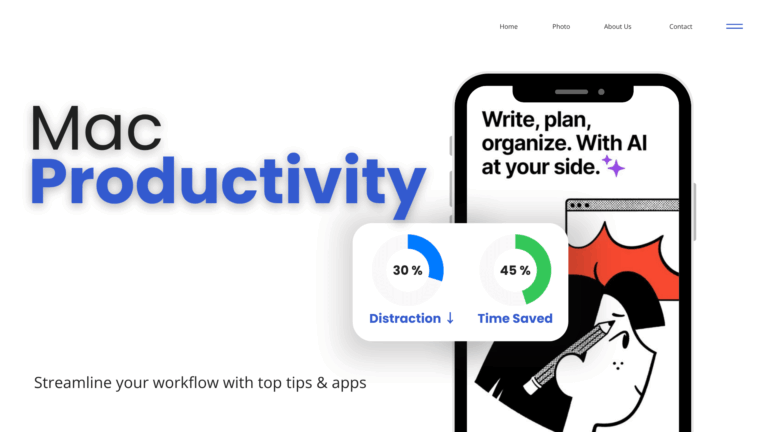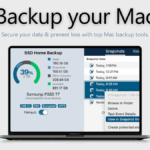If your Mac is acting up—maybe you’re facing sudden slowdowns, mysterious system errors, app crashes, or even the dreaded “Mac won’t boot” scenario—take a deep breath. Mac troubleshooting doesn’t have to be complicated. Mac problems happen to everyone, but most can be fixed quickly and painlessly if you know where to start.
This guide will help you diagnose and fix the most common Mac issues:
- Mac running slow?
- Apps freezing or crashing?
- Wi-Fi or Bluetooth not working?
- MacBook overheating or noisy fans?
- Getting error messages, malware alerts, or stuck updates?
You’ll also learn about the best Mac optimization software, malware removal tools, and step-by-step troubleshooting strategies — so your Mac can work like new, no genius bar required.
Why Macs Get Problems (And Why It’s Not the End of the World)
Let’s bust a myth: Apple computers are not immune to trouble. Even a new MacBook Pro can suffer from sluggish performance, startup errors, or unexpected crashes. The most common reasons for Mac issues include:
- Not enough storage space:
If your Mac’s disk is almost full, expect slowdowns, random errors, and trouble saving files. “Mac running slow” and “Mac storage full” are classic search queries for a reason. - Too many background apps:
Heavy multitasking eats up RAM and CPU. Use Activity Monitor to spot resource hogs. - Outdated or buggy macOS updates:
Some updates fix bugs; others introduce them. If you recently installed an update and now have problems, you’re not alone. - Malware or unwanted software:
“Mac malware removal” is a booming topic — yes, Macs can get infected too. - Overheating and fan noise:
“MacBook overheating” or “MacBook fan always on” can point to dust, poor ventilation, or rogue apps. - Disk errors and corrupted system files:
“Repair Mac disk” and “fix Mac errors” are among the most expensive keywords in the Mac niche.
But don’t worry — most issues can be solved with the right steps and a little patience.
Step 1: Mac Troubleshooting Basics — Restart and Free Up Space
Restart Your Mac (Seriously, It Works)
When your Mac is running slow, overheating, or refusing to open apps, sometimes a simple restart does the trick. It’s one of the most underrated mac troubleshooting steps—clearing temporary glitches and giving macOS a fresh start. If you see the spinning beachball, frozen windows, or your MacBook is overheating, reboot first.
Clean Up Storage Space
A full disk is the most common cause of Mac slowdowns, crashes, and weird errors. Here’s how to quickly free up space:
- Empty the Trash:
Obvious, but easy to forget. Files in Trash still eat up storage. - Delete large files and old downloads:
Open Finder, sort by size, and remove movies, installers, and old disk images (.dmg). - Move files to iCloud or an external drive:
Offloading your Photos library or big projects can instantly recover space. - Use “Manage Storage” in macOS:
Go to → About This Mac → Storage → Manage.
Offload unused apps and enable “Optimize Mac Storage”.
Tip: For fast results, try Mac optimization software like CleanMyMac X or OnyX. These apps clean junk files, clear cache, and scan for large or duplicate files — saving you hours of manual work.
Step 2: Mac Troubleshooting for Unresponsive Apps & Freezes
When an app freezes or your Mac gets stuck on a spinning wheel:
- Force Quit the app:
PressCmd + Option + Esc, select the app, click “Force Quit.” - Open Activity Monitor:
Check for apps using excessive CPU or memory — “Activity Monitor Mac” is your best friend for troubleshooting.
If your entire system freezes, hold the Power button until the Mac shuts down, then restart. If you keep seeing the same issue, check for software updates or try reinstalling the app.
Step 3: Troubleshooting “Mac Won’t Boot” and Startup Errors on Mac
There’s nothing more stressful than a Mac that won’t turn on or gets stuck at startup.
Here’s how to fix the most common startup problems:
Boot in Safe Mode
- Shut down your Mac.
- Hold the Shift key and turn it on — release when you see the login screen.
- Safe Mode repairs some disk issues and disables problematic login items.
Use Disk Utility for Repair
- Restart and hold
Cmd + Rto enter Recovery Mode. - Open Disk Utility, select your main disk, click “First Aid”.
- This is a must for fixing “Mac won’t boot” and “repair Mac disk” issues.
Reset NVRAM & SMC
- NVRAM reset: Shut down, turn on, and hold
Option + Cmd + P + Rfor 20 seconds. - SMC reset: For Intel Macs, shut down, then hold
Shift + Control + Option+ Power for 10 seconds. - For M1/M2 Macs: Just shut down and restart — SMC resets automatically.
Step 4: Mac Troubleshooting for Internet, Wi-Fi & Bluetooth Issues
If your Mac won’t connect to Wi-Fi, has slow internet, or your Bluetooth keyboard/headphones don’t work:
- Restart router and Mac: The classic fix for “Mac Wi-Fi not working.”
- Forget and reconnect to Wi-Fi networks: System Settings → Wi-Fi → select network → “Forget This Network.”
- Run Wireless Diagnostics: Hold Option, click Wi-Fi icon, open Wireless Diagnostics.
- Reset Bluetooth module: Hold Shift + Option, click Bluetooth in menu bar, choose “Reset Bluetooth module.”
If you still have problems, update macOS — many “mac internet issues” and “mac Wi-Fi problems” are fixed in new releases.
Step 5: Mac Troubleshooting for App Crashes and System Errors
Nothing ruins your day like an app that crashes at launch, or persistent error messages. If you keep seeing “application not responding,” “unexpectedly quit,” or “macOS error code,” here’s how to troubleshoot:
Update, Reinstall, or Remove Apps
- Update the app: Open the App Store or visit the developer’s website to check for updates.
- Delete app preferences:
Go to Finder →~/Library/Preferencesand remove files named likecom.developer.app.plist. - Reinstall the app: Delete the app completely, download a fresh installer, and reinstall.
Check for System Updates
Many “fix mac errors” and “mac app crashing” problems disappear after a simple macOS update. Go to System Settings → General → Software Update.
Remove Unwanted Startup Items
Too many login items can slow down your Mac or cause errors:
- System Settings → General → Login Items
- Remove anything suspicious or unneeded
Check for Malware
Yes, Mac malware is real — “mac malware removal” and “remove virus from mac” are expensive keywords for a reason. If you see endless pop-ups, browser redirects, or new apps you didn’t install:
- Use a trusted anti-malware tool (Malwarebytes for Mac, CleanMyMac X Malware Removal, or similar).
- Always download directly from the official site.
Tip: Avoid “free” anti-virus tools from random sites — many are scams. Stick to well-known names.
Step 6: MacBook Overheating, Loud Fans, and Battery Issues
“Why is my MacBook overheating?” “Why are the fans always running?” If you’re searching these, you’re not alone — thermal issues are common, especially with heavy use.
How to Fix Mac Overheating and Fan Noise
- Close unnecessary browser tabs and background apps.
- Check Activity Monitor for runaway processes (often browsers or design tools).
- Clean your Mac’s vents — dust and debris can block airflow.
- Update macOS and apps — poor software optimization can cause excessive CPU use.
- Use MacBook on a hard, flat surface for proper cooling.
Monitor Battery Health
- System Settings → Battery → Battery Health
- If your battery “service recommended” appears, it may be time for replacement.
Optimization tip:
High-performance optimization software often includes modules for battery health and fan control. Look for these features when choosing tools.
Step 7: Mac Troubleshooting for Data Recovery and Backups
Lost important files? Accidentally formatted a disk? “Mac data recovery” and “recover deleted files Mac” are extremely valuable search queries — here’s how to protect your files and recover lost data:
Use Time Machine
Apple’s built-in Time Machine makes full-system backups automatic and painless. Set up an external drive, and enable Time Machine in System Settings.
How to Recover Deleted Files
- Check the Trash first.
- Use Time Machine to restore from a backup.
- For deleted files with no backup, try a data recovery tool (Disk Drill, EaseUS Data Recovery Wizard, Stellar Data Recovery).
Pro tip:
Never install recovery software on the same disk you want to recover from — use another Mac or external drive to avoid overwriting deleted files.
Protect Yourself from Future Data Loss
- Set regular Time Machine or cloud backups.
- Keep your macOS and apps updated for security.
Step 8: macOS Update Issues — Stuck, Failed, or Endless Restart
Is your Mac stuck on “Installing Update,” caught in a restart loop, or showing “macOS could not be installed on your computer”? These update issues are common and expensive in tech support.
Mac Troubleshooting: How to Fix Stuck Updates
- Ensure you have enough free disk space (20GB or more).
- Restart your Mac in Safe Mode and retry the update.
- Reset the Software Update cache:
Open Terminal and type:sudo softwareupdate --clear-catalog - Download the Combo Update from the official Apple website and run it manually.
If all else fails, reinstall macOS using Recovery Mode (Cmd + R on startup).
Your files should remain intact, but always back up before big updates.
Step 9: Mac Troubleshooting for External Device Issues
When your Mac won’t recognize a USB drive, external monitor, or printer, follow these steps:
- Try a different port or cable.
- Restart both Mac and device.
- Check System Settings → Displays or Printers & Scanners.
- Update device drivers/software from the manufacturer’s website.
- Reset SMC/NVRAM if devices are still undetected.
If devices still won’t work on other computers, hardware failure is likely.
Step 10: When Nothing Else Works — Professional Mac Repair
If you’ve tried all troubleshooting steps — mac optimization software, malware removal, Safe Mode, Disk Utility, updates — and your Mac still won’t behave, it’s time for professional help.
Mac Troubleshooting: What to Do Next
- Back up your data immediately (Time Machine, iCloud, external drive).
- Contact Apple Support:
Use the official Apple Support website for diagnostics, repair booking, or live chat. - Visit an authorized Apple service provider if you suspect hardware issues (strange noises, screen problems, liquid damage, no power).
Never open or repair a MacBook yourself if you’re not experienced — modern Macs are delicate and expensive.
FAQ: Real Answers to Popular Mac Troubleshooting Questions
Mac Troubleshooting: Conclusion
Mac troubleshooting doesn’t have to be stressful, technical, or expensive. With the right Mac troubleshooting strategies, trusted optimization software, and a little patience, you can fix most Mac problems—from simple slowdowns and error messages to malware infections, overheating, and even data recovery—without leaving home or calling in the pros.
Always remember to keep backups, update regularly, and use only safe, reputable tools. And if all else fails? Don’t hesitate to get help — your Mac (and your sanity) will thank you.






